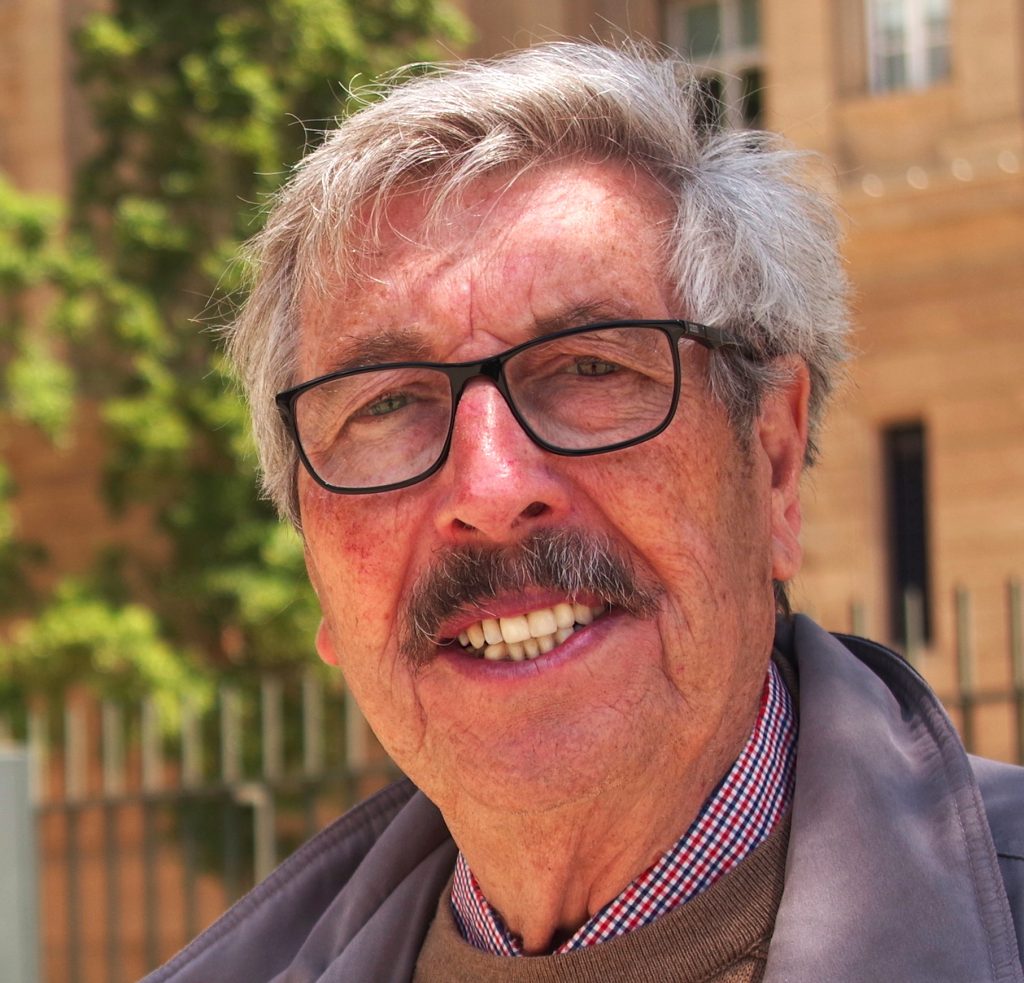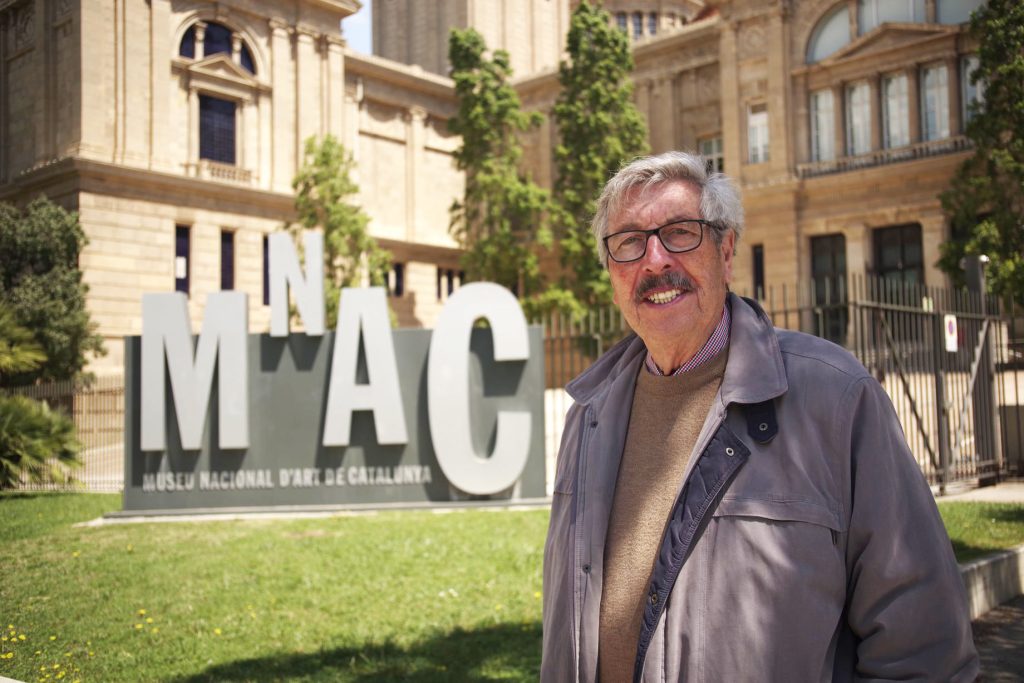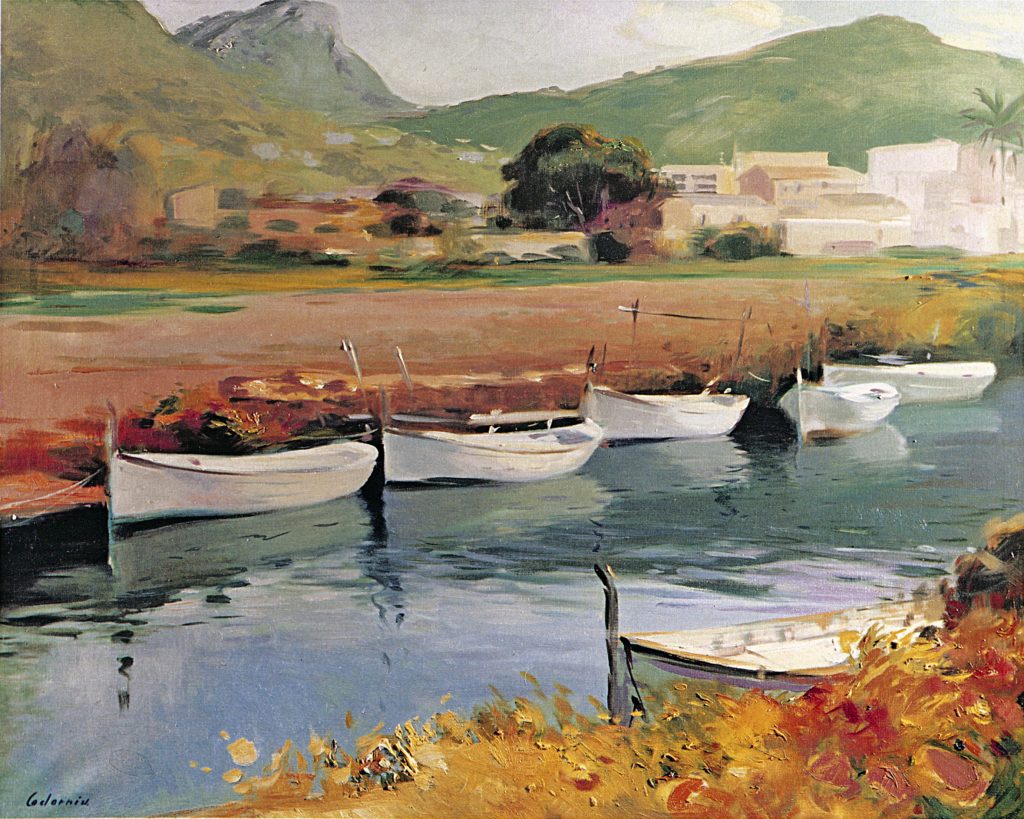
IN MEMORIAM
DANIEL CODORNIU ALOY
Introducing the painter Daniel Codorniu is like introducing a master’s work. And Daniel Codorniu was a master of painting; his seascapes were proverbial, as he achieved this personal seal that only inspiration and work as his professional vocation can grant.
Daniel Codorniu’s painting is a fine aesthetic present for contemplation and a purpose for artistic meditation. Through his work and over the years, Codorniu refined his style, from impressionist concepts and decorative effects to the essence of his own plasticity, luminous and colourful, crystal-clear patterns, perfectly crafted on a deep mastery of shapes. Thus, Daniel Codorniu’s work, brilliant and firm, fits into every plane of his compositions. Solid and graceful, Codorniu’s painting, by its cultural background and temperamental traits, is the precise model of a Mediterranean sensibility.
One of the qualities of his paintings is their freshness, their spontaneity, but we must be aware that behind that wise spontaneity, there is a long and disciplined learning process. Years, experiences, coming from early vocation and academic study.
Therefore, a single brushstroke represents a compendium of experiences, a summary of attempts, and a combination of feelings and craft. Each brushstroke engraves a past, his biography, technique and soul.
Daniel Codorniu understood the importance of the pictorial argument he wanted to portray in his paintings. That is why he never lost track of the main theme in his composition. On the other hand, if we analyse the arrangement of the integral elements, we can see that, in the painting, there is a decidedly condensing, centripetal intention, which absorbs the contemplative gaze. These are the vectors of a restrained passion, a controlled virtuosity.
Time, the passage of time, is a constant presence in Daniel Codorniu’s painting; he knew that shades shift as light changes. He knew there are colour gradations in the light as it brightens or fades, and perspectives are determined by shade scales and backlighting effects. There is a range of definitions and flexibilities in the compositional poetics of parts towards the whole. For sensory and intellectual reasons, Daniel Codorniu created a receptive point and, by the spell of old knowledge, summoned the colours, called the light and held them for a brief, magical instant to bring them back, in a personal pattern, onto the canvas, creating a landscape, a unique, integral, dense and balanced recreation.

Daniel Codorniu, who was wilful and shy, possessed a consubstantial strength in his impasto and an experiential gem in his colouring. From his love for nature, seeking pictorial secrets and suggestive intimacies, Codorniu created a constant plastic symphony. By looking again and again, at the precision of concrete shapes, in his painting, there is an inventory of insinuated shapes. And one can guess an air of colourful warmth among the dominant volumes. Daniel Codorniu knew that one can only interpret landscapes through observation and sensitivity.
A lover of the Latin and Homeric sea, Daniel Codorniu painted the blue water with emotional reverence, seawater seen from corners of warm land where green plants or silhouettes of boats reveal plural chromatic relationships between the sea’s reflection and light rays. Thus, the low, confident footpath of Cala Figuera and the high cliffs of Cala Sant Vicenç, are both appreciated themes for Daniel Codorniu. At times, the glimmer of light, or its silky flatness, intensifies the rhyme, and the rhythm, of the seascape perspective. At times, the pure whiteness of the boats, waving silently, is a reference to saline horizons or dozing spots. Whether in large panoramic or close-up, the spell of the seascape is a constant feature of Daniel Codorniu’s paintings in a variety of formats.
A painter, a good painter such as Daniel Codorniu, always keeps some illusion stored, a bit of interest in exploring spaces and the beauty of a new panorama.

And, as a painter, Daniel Codorniu approached the complexity of the Albufera landscape with new eyes and an astonished gaze. He discovered the mysterious exuberance, the humid density and the sensual colouring of the Albufera scenery. And, from the serene outline of the ‘Pont de Ferro’ (Iron Bridge) and the luxuriant chromatism of the ‘Gran Canal’ (Great Canal), Codorniu captured the watery essences and the sweetened air, the cracked tree shadows and the bright reflections of the canal. A labyrinth of leaves and branches with entangled transparencies, a flattering verticality of palm trees, an elusive horizontality in the water. The Albufera, an enchanting panorama, bewitched Daniel Codorniu’s paintbrush, pouring out its experience on remarkable paintings in this nearly anthological exhibition.
This curious stylistic execution, typical of Daniel Codorniu’s nature, masters all the pictorial techniques: pencil, ink, watercolour, and oil. In each of these modalities, he got the best results, and many of them are present in this exhibition held by Daniel Codorniu in Sa Pobla. This is the exhibition of a master.
Alexandre Ballester
December 1992